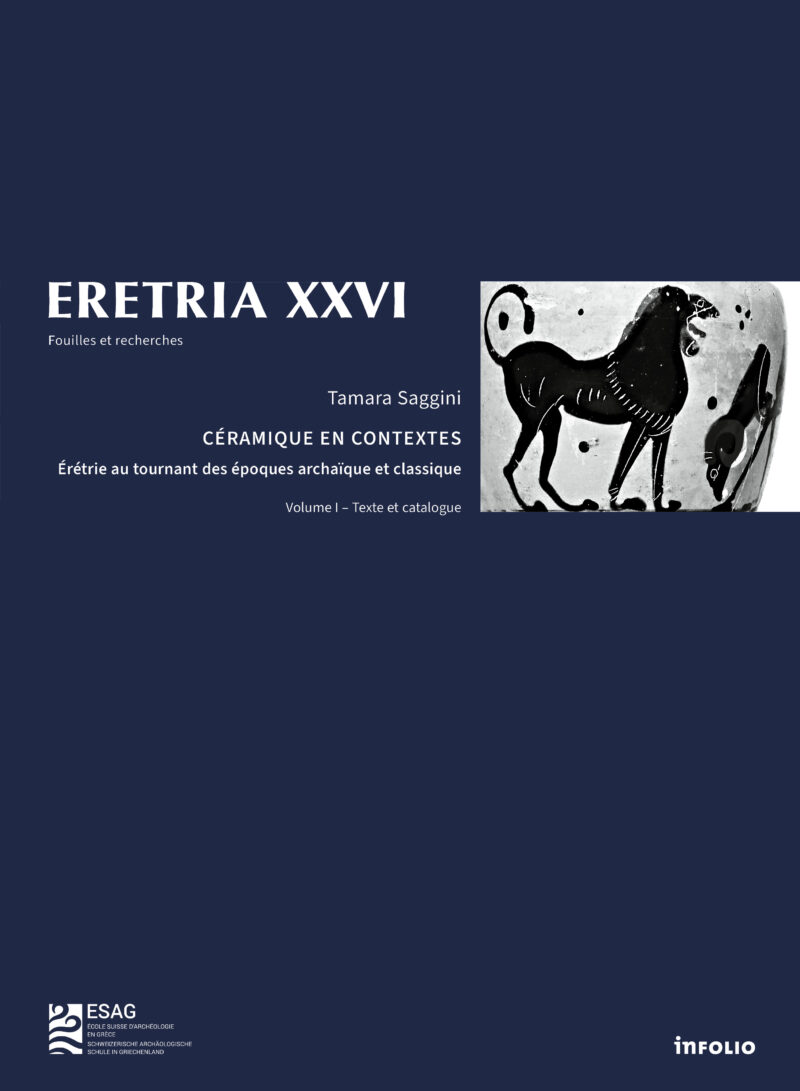ERETRIA XXVI
Tamara Saggini, Céramique en contextes. Érétrie au tournant des époques archaïque et classique.
The Greco-Persian wars, a pivotal episode in Greek History, mark the transition between the Archaic and Classical periods. They also represent a turning point in the fate of Eretria, which was sacked by Persian troops in 490 BC. Herodotus provides a comprehensive account of the siege, destruction and deportation. However, little is known about the city during the period preceding the events, the extent of the damage inflicted by the Persians, and the subsequent recovery of Eretria.
This book, which is the result of a doctoral thesis, provides new insights into these issues by comparing historical sources with an in-depth examination of the archaeological evidence. The study is based on a contextual analysis of the material from excavations carried out in the city by Swiss archaeologists since the 1960s. The catalogue, which includes over 1,500 entries, provides a comprehensive overview of 6th- and early 5th-century pottery, both locally produced and imported.
The analysis of the finds and contexts sheds light on the function of the various urban areas and their development. The study reveals both continuities and ruptures in the material culture and urban occupation of the city. These are compared with event history in order to assess the impact of the Greco-Persian Wars on Eretria. Disused quarters, interrupted workshop production, burials within the city walls and hasty renovations all bear witness to the upheavals that had a lasting effect on the life of the Eretrian population.
Eretria XXVI was awarded the Delepierre Prize by the Association des Études Grecques.
2024, 2 vol. of 280 and 328 pages in French with abstracts in French, German, English and Greek. Paperback, 22x30cm, numerous color illustrations and plans. ESAG & Infolio co-publishers.
ISBN 978-2-88968-170-9 (print)
ISBN 978-2-9701702-2-8 (digital)
DOI 10.5281/zenodo.13933110
ERETRIA XXVI, vol. 1 (open access) ERETRIA XXVI, vol. 2 (open access)
About the author
Tamara Saggini obtained her PhD from the University of Geneva. She is currently a senior researcher on a project funded by the Swiss National Science Foundation, SERI and ESAG to investigate the Sanctuary of Artemis at Amarynthos. She is co-directing the excavations and is involved in the the publication of the temple of Artemis and related finds. Since 2025, she has been serving as Scientific Secretary of the Swiss School of Archaeology in Greece.
Tamara.Saggini@esag.swiss
